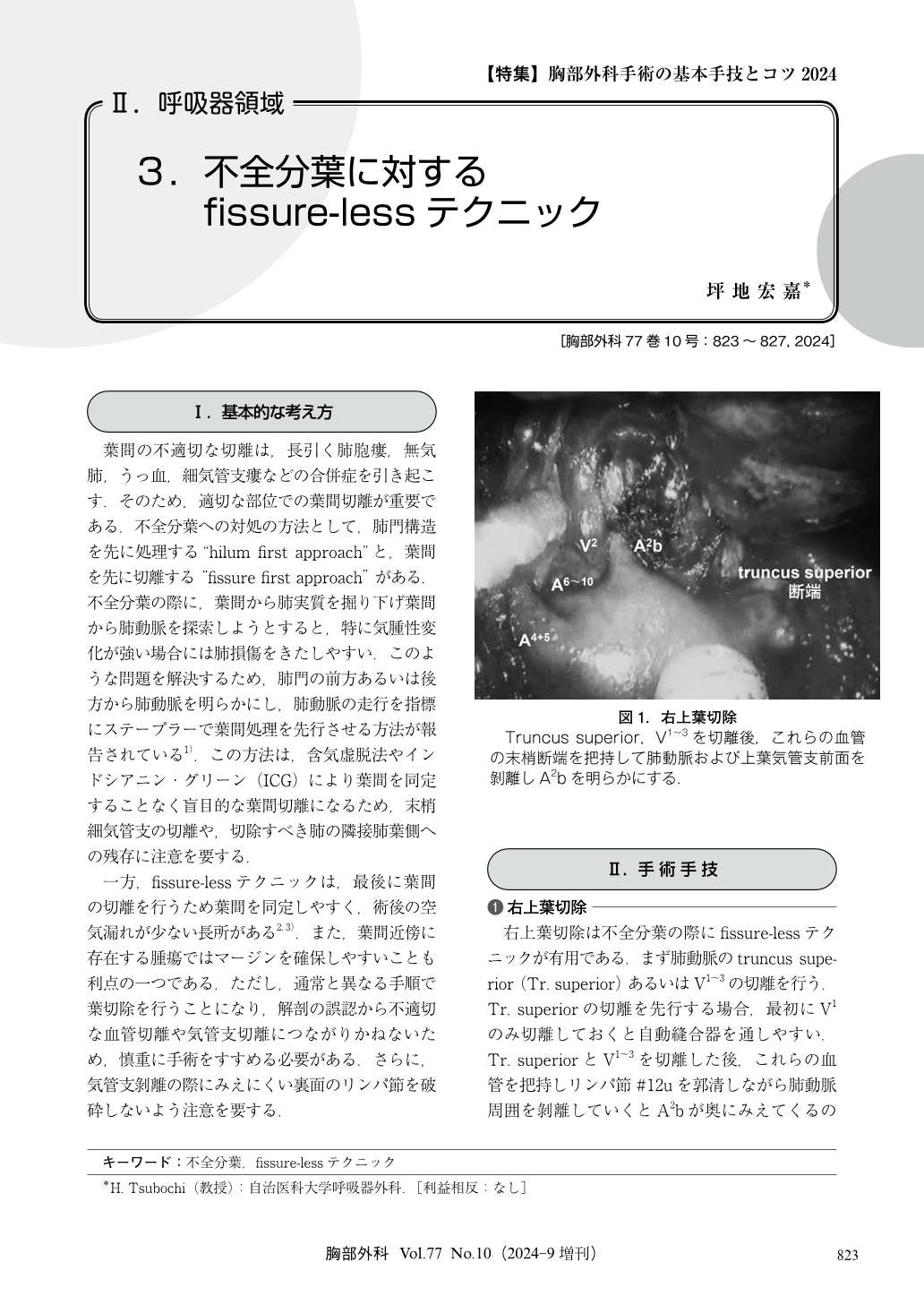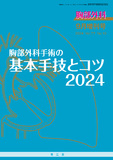Japanese
English
- 有料閲覧
- Abstract 文献概要
- 1ページ目 Look Inside
- 参考文献 Reference
葉間の不適切な切離は,長引く肺胞瘻,無気肺,うっ血,細気管支瘻などの合併症を引き起こす.そのため,適切な部位での葉間切離が重要である.不全分葉への対処の方法として,肺門構造を先に処理する“hilum first approach”と,葉間を先に切離する“fissure first approach”がある.不全分葉の際に,葉間から肺実質を掘り下げ葉間から肺動脈を探索しようとすると,特に気腫性変化が強い場合には肺損傷をきたしやすい.このような問題を解決するため,肺門の前方あるいは後方から肺動脈を明らかにし,肺動脈の走行を指標にステープラーで葉間処理を先行させる方法が報告されている1).この方法は,含気虚脱法やインドシアニン・グリーン(ICG)により葉間を同定することなく盲目的な葉間切離になるため,末梢細気管支の切離や,切除すべき肺の隣接肺葉側への残存に注意を要する.
Dissection through an incomplete fissure for pulmonary artery exposure leads to complications such as prolonged air leaks, atelectasis, and congestion. One way to resolve these problems is the fissure-less technique, in which the hilar vessels and bronchi are dissected first, and the fissure is divided last. This approach has the advantage that the fissure can be relatively easily identified and postoperative air leakage is minimized because the fissure division is performed last. Another advantage is that it is easier to keep enough distance from the tumor, especially if the tumor is close to the fissure. Since this method involves surgical manipulation under a different field of view than the interlobar approach, it is important not to misdiagnose the anatomy of the pulmonary artery and other organs. In order to prevent incorrect surgical manipulation, it is necessary to read the computed tomography (CT) findings preoperatively and to understand the anatomy intraoperatively. In addition, to prevent destruction of the hilar lymph nodes, dissection around the bronchus must be carefully performed. Furthermore, when it is difficult to make a judgment intraoperatively, careful attention is required, such as checking the CT scan again. The fissure-less approach is a technique that should be mastered as one way to deal with incomplete fissure.

© Nankodo Co., Ltd., 2024


